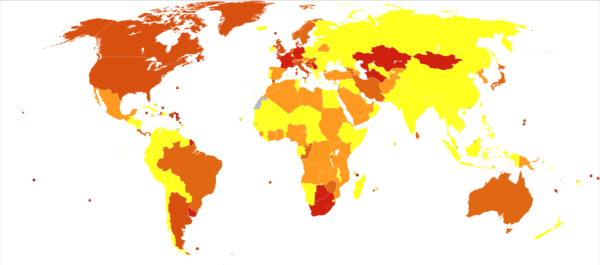
Alaska behavioral health providers specializing in eating disorders say their waiting lists have been growing, an indication there aren’t enough options for eating disorder treatment in the state.
That’s according to recent reporting by Anchorage Daily News health reporter Annie Berman, who spoke to both providers and former patients who’ve battled with eating disorders in the past.
Berman said the reports of more people seeking treatment for eating disorders follows a national trend, and it’s something that might have been exacerbated by the COVID-19 pandemic. And experts say dealing with an eating disorder becomes more difficult the longer someone has to wait for treatment, Berman said.
RELATED: Alaska running phenom Allie Ostrander opens up about eating disorder
LISTEN:
Read a full transcript of the interview with minor edits for clarity.
Annie Berman: The longer you go untreated, the more some of these behaviors become very ingrained — it’s harder to treat it. So yeah, having to wait is really a problem.
The other thing is that if you get to the more severe stage of an eating disorder, that’s when you really need residential care where you need to go to an actual, physical location.
There are no treatment centers in Alaska. The ones that are in Lower 48 have really, really long waiting lists right now. And so that makes it extra important when you’re in Alaska to be able to see people that can monitor you in the meantime — that outpatient kind of care. There were a couple families that told one of the providers I interviewed that they were considering leaving Alaska, because they were just really struggling with being able to access care for their children.
Casey Grove: Maybe I should back up. What is an eating disorder? And then also, what are the risks, short term and long term?
AB: It’s a diagnosable mental illness. A lot of people say that eating disorders are not just about food — food is just sort of this tool to have a sense of control and control their stress or whatever’s going on in their life. But it can kind of distort your view of yourself and of the world.
Eating disorders are really deadly. That’s something else I learned about eating disorders. It’s one of the deadliest mental illnesses. I think it causes like 10,000 deaths in the U.S. each year that are directly linked to eating disorders. And it’s also linked to really high suicide rate. So a really large percentage of people who are diagnosed with an eating disorder will attempt suicide.
CG: That’s interesting that the pandemic may have exacerbated this for people. Tell me about that. Is that a sort of a control issue, wanting to have control in your life kind of thing?
AB: Yeah. So I think the pandemic was this catastrophic event — that’s how somebody I spoke to put it — where it kind of did make us all feel out of control. And as I said, eating disorders are about kind of finding that sense of control. So that was a big trigger.
There were also different points during the pandemic where I think there were other things going on. In the beginning, there were these food shortages, or there were these kinds of disruptions in the supply chain. And people were going out and having this sense of scarcity. So that was a big one, the beginning.
Later on, I think there was sort of this economic upheaval for a lot of people where even for people that maybe are doing financially okay, there’s kind of a sense of the impermanence of jobs and a lot of uncertainty around security, and food security, too, that came up for a lot of people, which can also be hard.
The people I spoke to describe there’s different things that can just — I use the word trigger — but I just mean in your life, that if you’re likely to get an eating disorder, if these things happen to you, then it kind of makes it more likely that you will like progress towards it becoming a disorder.
CG: So the folks that you talk to about this, the experts, the people that are involved in helping people deal with this, what do they say we need to do in Alaska to improve the situation?
AB: The Alaska Eating Disorder Alliance — I think they want more people here. They want more nutritionists and specialists who have that background. They’re working really hard on just getting more people here and making it a place where people want to work.
Also, I know that there’s a lot of barriers to getting eating disorders covered by insurance and that can be really difficult. So I think they’re trying to change policy. One thing a lot of people that I spoke to said that they really want all kind of all doctors who you might see before you would go to seek treatment for an eating disorder, just other medical professionals — they want them to be really trained in eating disorders, because I think that that’s something that some people say doesn’t get the same kind of focus in medical school.
There was one woman I spoke to who had an eating disorder, and she said that she just felt like there were a lot of nonspecialized doctors and therapists that she spoke to who just really didn’t know how to help her or didn’t have really any background or training and how to help her. So I think they just want it to be something that a lot of other doctors and for medical professionals have some expertise in as well.
Casey Grove is host of Alaska News Nightly, a general assignment reporter and an editor at Alaska Public Media. Reach him at cgrove@alaskapublic.org. Read more about Casey here.





